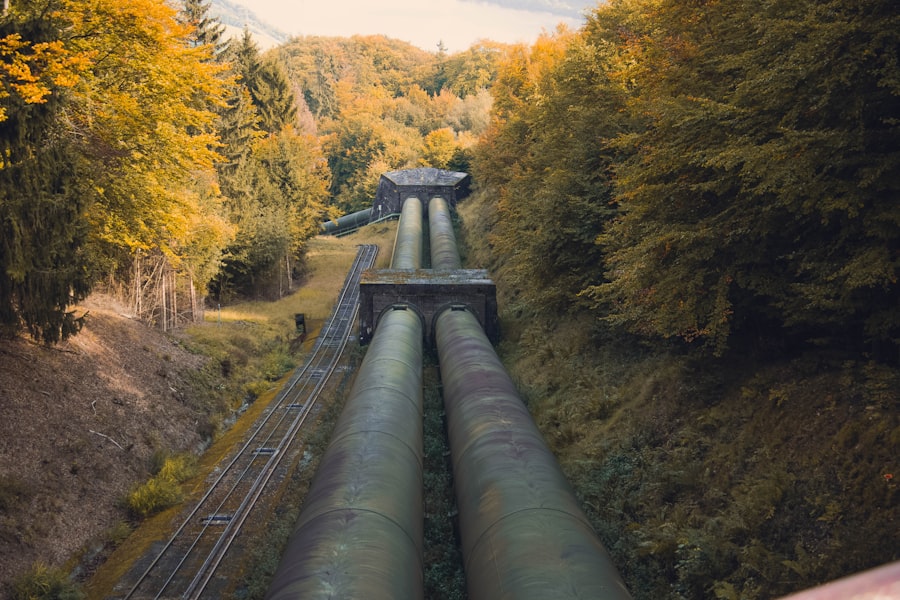
In recent years, the demand for skilled trades has surged dramatically, driven by a combination of factors including an aging workforce, increased construction activity, and a growing emphasis on infrastructure development. As many seasoned professionals approach retirement age, the industry faces a significant skills gap that needs to be filled. According to the U.S. Bureau of Labor Statistics, employment in skilled trades is projected to grow much faster than the average for all occupations over the next decade. This trend is particularly evident in fields such as plumbing, pipefitting, and steamfitting, where the need for qualified workers is becoming increasingly urgent. The construction sector is experiencing a renaissance, fueled by urbanization and the need for modernized infrastructure. Cities are expanding, and with that growth comes the necessity for reliable plumbing and piping systems. Additionally, the push for sustainable building practices has led to an increased demand for skilled tradespeople who can install and maintain energy-efficient systems. As a result, those entering the skilled trades can expect not only job security but also a variety of opportunities across different sectors, including residential, commercial, and industrial construction.
One of the most appealing aspects of these professions is the potential for high earning power. Skilled tradespeople often enjoy competitive salaries that can rival those of many four-year degree holders.
For instance, according to the U.S. Bureau of Labor Statistics, plumbers earned a median annual wage of over $56,000 in 2020, with experienced professionals making significantly more depending on their specialization and location. Moreover, these careers provide a sense of job satisfaction that is hard to match.
Skilled tradespeople play a crucial role in ensuring public health and safety by installing and maintaining essential systems that people rely on daily. The tangible nature of their work allows them to see the direct impact of their efforts on communities. Whether it’s fixing a leaky pipe or installing a new heating system, the knowledge that their skills contribute to the well-being of others can be incredibly fulfilling.
Additionally, many tradespeople enjoy the variety that comes with the job; no two days are alike, as they often work on different projects and face unique challenges.
Key Takeaways
- Skilled trades are in high demand, making it a lucrative career choice.
- Pursuing a career in plumbing, pipefitting, and steamfitting offers job stability and competitive salaries.
- Entry into the field requires completing an apprenticeship program or vocational training.
- Job outlook for plumbers, pipefitters, and steamfitters is projected to grow, with opportunities for advancement.
- Licensing and certification are crucial for ensuring quality work and meeting industry standards.
- Plumbers, pipefitters, and steamfitters play a vital role in sustainable construction by implementing eco-friendly practices and technologies.
Training and Education Requirements for Entry into the Field

Entering the fields of plumbing, pipefitting, or steamfitting typically requires a combination of formal education and hands-on training. Most aspiring professionals begin their journey by completing a high school diploma or equivalent. While some may choose to pursue post-secondary education through community colleges or technical schools, many opt for apprenticeships as their primary route into the industry.
These apprenticeships usually last between four to five years and combine classroom instruction with on-the-job training under the supervision of experienced professionals. During their apprenticeship, trainees learn essential skills such as blueprint reading, pipe installation techniques, and safety protocols. They also gain valuable experience working with various materials and tools specific to their trade.
In addition to technical skills, apprentices develop problem-solving abilities and critical thinking skills that are vital for success in the field. Many apprenticeship programs are sponsored by unions or trade organizations, which often provide additional resources and support for their members.
Job Outlook and Potential for Advancement
| Job Title | Job Outlook | Potential for Advancement |
|---|---|---|
| Software Developer | Excellent | High |
| Registered Nurse | Very good | High |
| Marketing Manager | Good | High |
| Electrician | Steady | Moderate |
The job outlook for plumbers, pipefitters, and steamfitters remains robust as industries continue to expand and evolve. According to projections from the U.S. Bureau of Labor Statistics, employment in these fields is expected to grow by approximately 5% from 2019 to 2029, which is faster than the average for all occupations.
This growth is largely attributed to ongoing construction projects and the need for maintenance and repair of existing systems. As infrastructure ages and new technologies emerge, skilled tradespeople will be essential in adapting to these changes. Advancement opportunities within these careers are plentiful for those willing to invest in their professional development.
Many skilled tradespeople start as apprentices and can progress to journeyman status after completing their training. From there, they may choose to specialize in specific areas such as residential plumbing or commercial pipefitting, which can lead to higher wages and increased responsibilities. Additionally, experienced professionals may take on supervisory roles or even start their own businesses, further expanding their career prospects.
The Importance of Licensing and Certification
Licensing and certification are critical components of a successful career in plumbing, pipefitting, and steamfitting. Most states require professionals in these fields to obtain a license before they can legally perform work. The licensing process typically involves passing an examination that tests knowledge of local codes, regulations, and safety practices.
This requirement ensures that only qualified individuals are allowed to work on complex systems that directly impact public health and safety. Certification from recognized organizations can further enhance a tradesperson’s credentials and marketability. Various associations offer specialized certifications that demonstrate expertise in specific areas such as green plumbing practices or advanced pipefitting techniques.
These certifications not only validate a professional’s skills but also signal to potential employers and clients that they are committed to maintaining high standards in their work. In an increasingly competitive job market, having additional certifications can set individuals apart from their peers and open doors to new opportunities.
The Role of Plumbers, Pipefitters, and Steamfitters in Sustainable Construction

As society becomes more conscious of environmental issues, the role of plumbers, pipefitters, and steamfitters in sustainable construction has gained prominence. These skilled tradespeople are at the forefront of implementing energy-efficient systems that reduce waste and promote sustainability. For instance, plumbers are increasingly involved in installing low-flow fixtures that conserve water without sacrificing performance.
This not only helps homeowners save on utility bills but also contributes to broader efforts aimed at preserving precious water resources. Pipefitters and steamfitters also play a vital role in sustainable construction by working with advanced heating and cooling systems that utilize renewable energy sources. For example, they may install geothermal heating systems or solar water heaters that significantly reduce reliance on fossil fuels.
By integrating these technologies into new buildings or retrofitting existing structures, skilled tradespeople help create more energy-efficient environments that align with modern sustainability goals.
In conclusion, the growing demand for skilled trades presents an array of opportunities for individuals seeking rewarding careers in plumbing, pipefitting, and steamfitting.
With competitive salaries, job satisfaction derived from meaningful work, robust training programs, promising job outlooks, essential licensing requirements, and a pivotal role in sustainable construction practices, these professions offer a pathway to success in an ever-evolving industry landscape.
If you’re exploring various career paths within essential services, you might find the article on “Medical and Health Services Managers” particularly enlightening. This piece offers a comprehensive overview of the responsibilities, educational requirements, and potential career advancements for those interested in managing healthcare services. It’s a great resource for anyone considering a managerial role in the healthcare sector, which, like plumbing and pipefitting, plays a crucial role in maintaining the well-being of our communities. You can read more about this career by visiting Medical and Health Services Managers: Careers in the USA.
FAQs
What is the difference between a plumber, pipefitter, and steamfitter?
Plumbers primarily work with systems that involve water, such as piping for bathrooms, kitchens, and heating systems. Pipefitters work with high-pressure and low-pressure systems that carry gases or liquids, such as in industrial settings. Steamfitters specialize in systems that move high-pressure steam, such as those found in power plants and heating systems.
What are the typical job duties of a plumber, pipefitter, and steamfitter?
Plumbers install and repair water, waste disposal, drainage, and gas systems in homes and commercial buildings. Pipefitters and steamfitters install and maintain piping systems used in manufacturing, power generation, and other industrial settings.
What are the educational requirements to become a plumber, pipefitter, or steamfitter?
Most plumbers, pipefitters, and steamfitters learn their trade through a combination of technical education and on-the-job training. Some may also complete apprenticeship programs or obtain certifications.
What is the job outlook for plumbers, pipefitters, and steamfitters in the USA?
According to the U.S. Bureau of Labor Statistics, employment of plumbers, pipefitters, and steamfitters is projected to grow 4 percent from 2019 to 2029, about as fast as the average for all occupations.
What is the average salary for plumbers, pipefitters, and steamfitters in the USA?
According to the U.S. Bureau of Labor Statistics, the median annual wage for plumbers, pipefitters, and steamfitters was $55,160 in May 2020.



